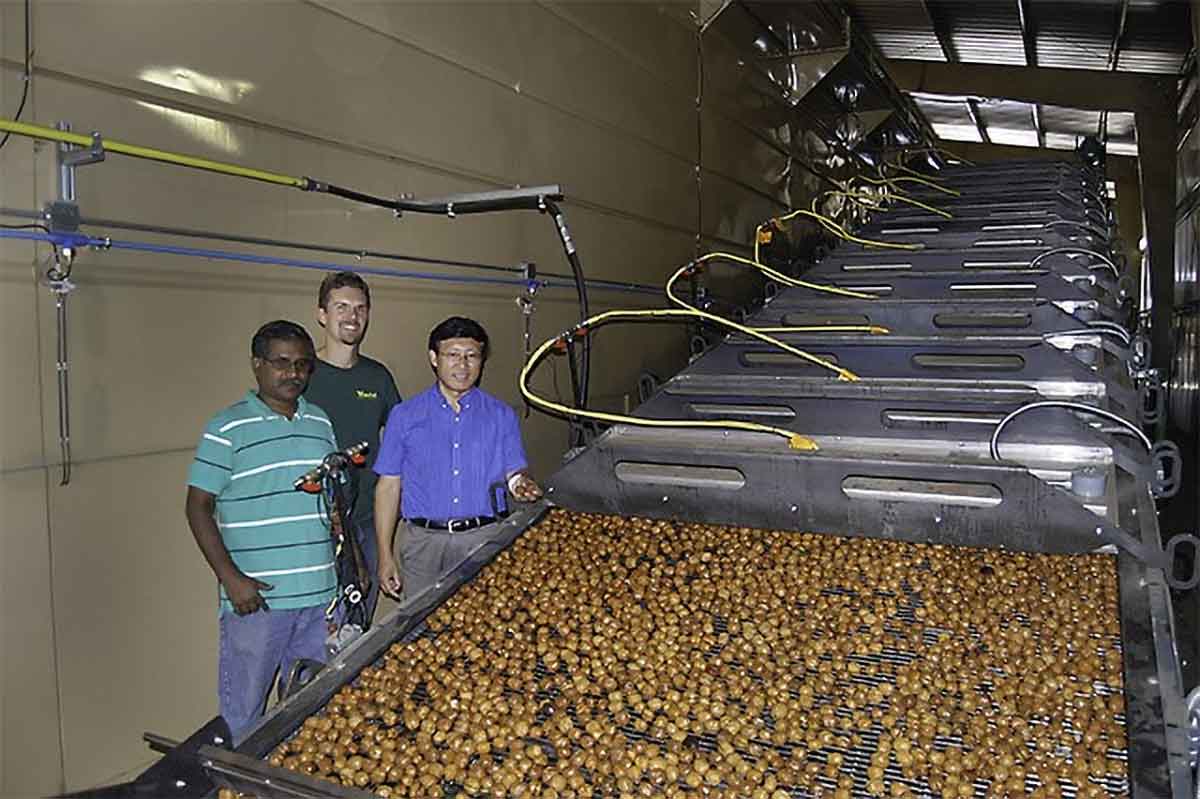Infrared drying technology for removing moisture from in-shell walnuts, was tested in 2017 with funding from the California Energy Commission and in collaboration with Wizard Manufacturing of Chico. United States Department of Agriculture (USDA) Agricultural Research Service (ARS) scientist Zhongli Pan led the research to both reduce energy use in the drying process and to improve nut quality.
Standard hot air drying of walnuts is a process that uses natural gas or electricity. Infrared drying uses intense light that is felt, but not seen is a type of electromagnetic radiation much like radio waves, ultraviolet radiation and microwaves. The process reduces the surface moisture content of walnut quickly, preventing the moisture from moving into the shell.
Radiation heating with infrared is key to improving drying
According to the CEC, using infrared technology for the drying process could reduce greenhouse gases as the infrared emitters do not produce NOx (oxides of nitrogen) Natural gas consumption would also be reduced.
Tara McHugh, ARS researcher at the USDA facility in Albany said studies for scaling the technology up for commercial use continue. Cost of changing drying machinery over to the new equipment is also delaying adoption of this walnut drying method.
It has been proven to shorten drying time. Pre-drying with infrared takes less than three minutes. The pre dried walnuts are then sent to a regular hot air dryer to continue the
process at about eight percent moisture for optimum storage.
Justin McCurdy with Wizard Manufacturing said that through studies with UC researchers they found the infrared pre-drying technology significantly reduces both dry times and energy consumption while maintaining kernel quality and shelf life.
Wizard is currently working to develop and test a market-ready version of the test equipment from the ARS study. The challenge, he said, is finding an optimal way to integrate the system into existing facilities. Wizard is taking what was learned from the testing and developing a cost effective system to meet the needs of the industry, he said.












